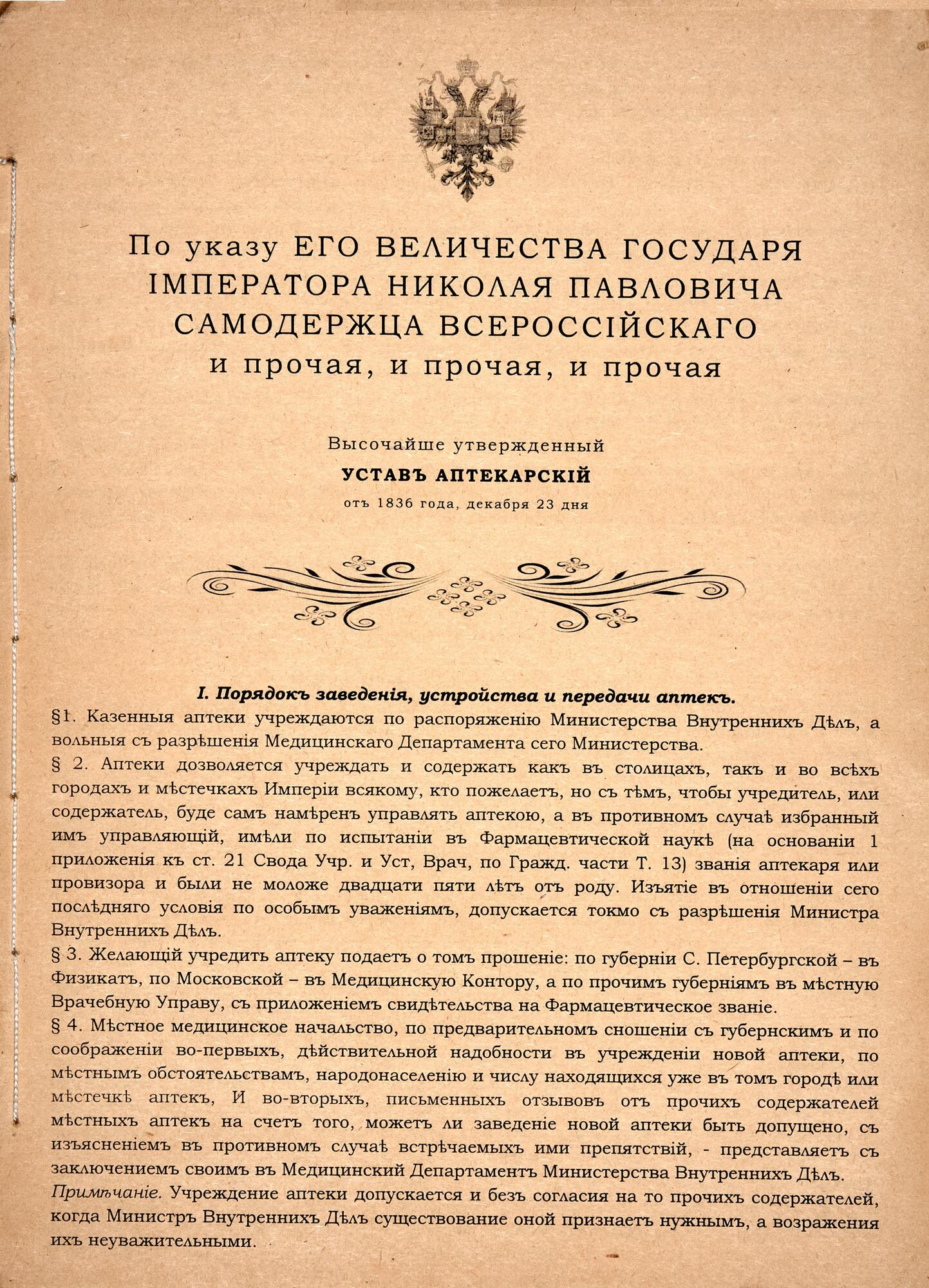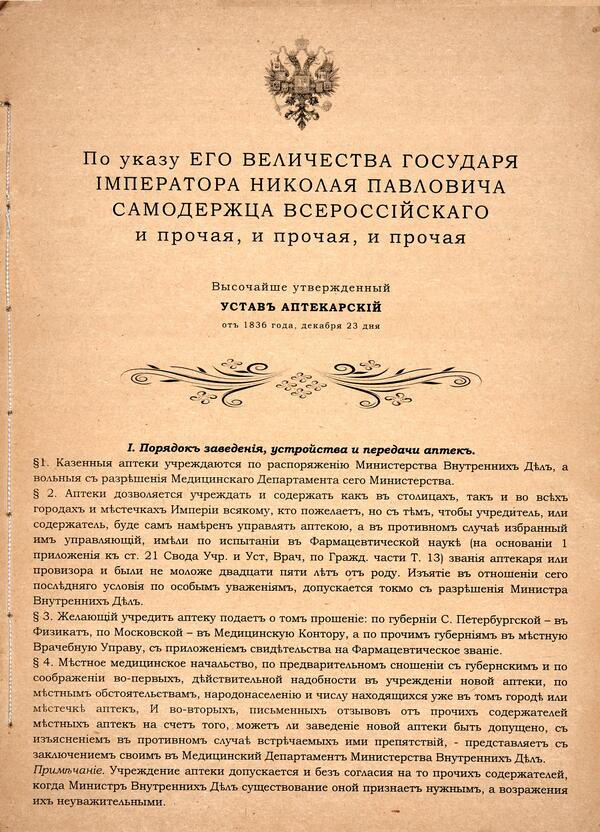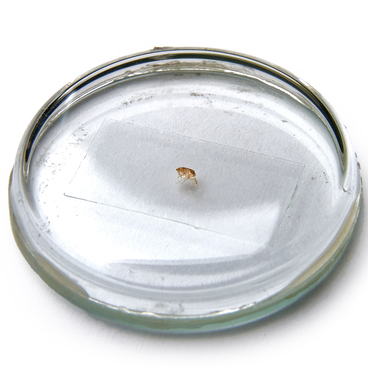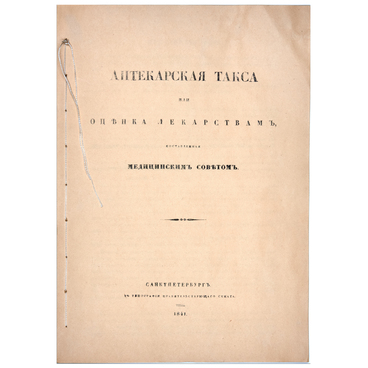The Pharmaceutical Charter was a law regulating the activities of pharmacies in the Russian Empire. It was first adopted in 1789, and it remained unchanged until 1857 when it entered the code of laws of the Russian Empire.
The systematization of medicines began in 1778. Then the Medical Board developed the State Pharmacopeia Rossica — a document that specified the requirements for medicines and a list of high-quality drugs. To a greater extent, this list included domestic remedies of plant origin. It also contained instructions for the preparation of the most complex medicines. In 1798, the pharmacopeia was reissued and finalized — new developments of domestic pharmacists were introduced.
The first Pharmaceutical Charter appeared in 1789 and contained 23 articles. The text was duplicated in Russian and German, given that since the end of the 16th century, the Pharmacy Order was controlled by immigrants from German lands. German doctors and pharmacists were invited to develop this business in Russia, and they referred to the German text of the charter. The Pharmaceutical Charter has become the main document regulating the activities of pharmacies. Its articles prescribed the rules for pharmacy management and the duties of its employees.
The charter stipulated that a pharmacist was to pass a test and to be given the pharmaceutical title by the State Medical Board. There were also requirements for the manner of his behavior: ‘Keepers and managers of pharmacies must be of an honest and upright demeanor.’ The pharmacist had the right to sell medicines only on a doctor’s prescription. The exceptions were ‘the lightest and safest medicines, such as almond oil, cinnamomic water, rosemary grass, rhubarb syrup and the like, ’ as well as drugs that were urgently needed during childbirth.
All medicines were made by a qualified pharmaceutical chemist — a pharmacist of the highest qualification. The pharmacy manager was responsible for their quality. For the purchase from the manufacturers of ‘such composite products that have to be prepared in a pharmacy laboratory’, a fine of 50 to 100 rubles could be imposed. Medicines were sold ‘at any time’, around the clock: a pharmacist was always on duty at night at the pharmacy.
In the charter of 1857, the requirements were tightened. For the sale of alcoholic beverages, pharmacists were subjected to serious punishment: ‘For the first time, a monetary penalty of 50 to 100 rubles, for the second time from 100 to 500 rubles, for the third time he permanently loses the right to manage the pharmacy.’ In such emergencies as poisoning, suffocation, bleeding, the pharmacist was obliged to provide emergency medical care, but at the same time, he was fully responsible for the consequences of treatment.
According to the Charter, the pharmacy was to have: a prescription room, a storage room, a laboratory, a coctorium, a dry basement, an ice cellar, a drying room for medicinal plants. The pharmacy ‘must be provided with a sufficient amount of fresh and proper quality medicines and materials, as well as necessary for the storage and distribution of medicines various dishes, pharmacy scales of various kinds, tools, and devices for composing medicines and for the production of pharmaceutical and chemical operations.’
The exhibition presents a moulage of the publication ‘Temporary prices of medicines with the pharmacy charter’ of 1811.



